Countries in Western Europe
How Many Countries in Western Europe
As a region of Europe, Western Europe is composed of 9 independent countries (Austria, Belgium, France, Germany, Liechtenstein, Luxembourg, Monaco, Netherlands, Switzerland) and 2 territories (Guernsey, Jersey). See below for the list of West European countries and dependencies by population. Also, you can find all of them in alphabetical order at this end of this page.
1. Austria
Austria, officially the Republic of Austria, is a landlocked state in Central Europe. Austria borders both Germany and the Czech Republic to the north, Slovakia and Hungary to the east, Slovenia and Italy to the south and Switzerland and Liechtenstein to the west.
 |
|
2. Belgium
Belgium is a constitutional monarchy in Western Europe and borders France, Germany, Luxembourg and the Netherlands. Belgium is the seat of EU headquarters and several major international organizations. There are about 11 million people living in Belgium and the two largest regions are called Flanders which is located in the north and the French-speaking southern region of Wallonia.
 |
|
3. France
France, formally the Republic of France, or alternatively the French Republic, is a republic in Western Europe. France has coasts to the Atlantic, the English Channel and the Mediterranean.
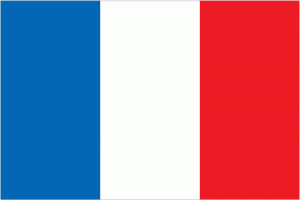 |
|
4. Germany
Germany, formally the Federal Republic of Germany, is a federal state located in Central Europe consisting of 16 states. Germany is one of the world’s leading industrial countries.
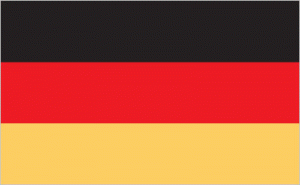 |
|
5. Liechtenstein
Liechtenstein, formally the Principality of Liechtenstein, is an independent constitutional monarchy in the Alps of Central Europe, located between Switzerland and Austria. Liechtenstein is one of Europe’s microstates.
 |
|
6. Luxembourg
Luxembourg, officially the Grand Duchy of Luxembourg, is a state located in Western Europe. The country borders Belgium to the west and north, Germany to the east and France to the south.
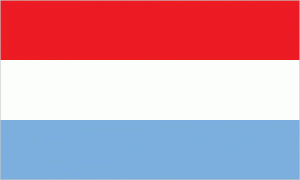 |
|
7. Monaco
Monaco, formally the Principality of Monaco, is a microstat with a constitutional monarchy located in southern France in Western Europe.
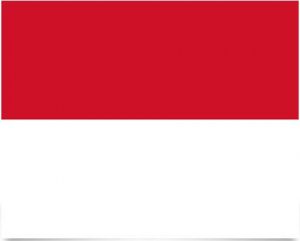 |
|
8. Netherlands
The Netherlands, formally the Kingdom of the Netherlands, is a country in Western Europe. The country borders the North Sea to the north and west, Belgium to the south and Germany to the east. The Netherlands also includes the municipalities of Bonaire, Saba and Sint Eustatius in the Caribbean.
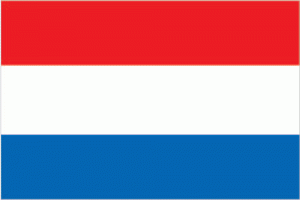 |
|
9. Switzerland
Switzerland or officially the Swiss Confederation is a federation in Central Europe, bordering France, Germany, Italy, Austria and Liechtenstein.
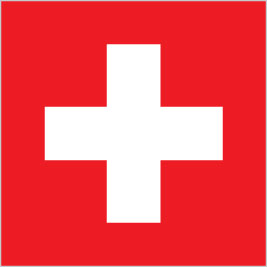 |
|
List of Countries in Western Europe and Their Capitals
As noted above, there are 3 independent countries in the Western Europe. Among them, the largest country is Germany and the smallest is Monaco. The full list of Western European countries with capitals is shown in the table below, ranked by latest total population.
| Rank | Independent Country | Current Population | Capital |
| 1 | Germany | 82,979,100 | Berlin |
| 2 | France | 66,998,000 | Paris |
| 3 | Netherlands | 17,325,700 | Amsterdam |
| 4 | Belgium | 11,467,362 | Brussels |
| 5 | Austria | 8,869,537 | Vienna |
| 6 | Switzerland | 8,542,323 | Bern |
| 7 | Luxembourg | 613,894 | Luxembourg |
| 8 | Liechtenstein | 38,380 | Vaduz |
| 9 | Monaco | 38,300 | Monaco |
Territories in Western Europe
| Rank | Dependent Territory | Population | Territory of |
| 1 | Jersey | 105,500 | U.K. |
| 2 | Guernsey | 62,063 | U.K. |
Map of Countries in Western Europe

Brief History of Western Europe
Ancient Civilizations and Early History
Prehistoric Times and Early Inhabitants
Western Europe, with regions including present-day France, Germany, the Netherlands, Belgium, and Switzerland, has a rich prehistoric heritage. The Paleolithic era saw early human settlements, with the famous Lascaux Cave paintings in France dating back to around 17,000 BCE. The Neolithic period brought agricultural practices, leading to the establishment of permanent settlements and megalithic structures like the Carnac stones in Brittany.
Celtic Tribes and Roman Conquest
By the first millennium BCE, Celtic tribes such as the Gauls, Britons, and Iberians dominated Western Europe. These tribes established sophisticated societies with advanced metalworking and trade networks. The Roman conquest of Gaul (modern-day France and surrounding regions) began in 58 BCE under Julius Caesar, leading to the integration of these areas into the Roman Empire. The Roman period brought urbanization, infrastructure development, and cultural assimilation, leaving a lasting legacy in the form of roads, aqueducts, and Latin-based languages.
Middle Ages
Frankish Kingdoms and the Carolingian Empire
The decline of the Western Roman Empire in the 5th century CE led to the rise of Germanic kingdoms, most notably the Franks. Under the leadership of King Clovis I, the Franks established a powerful kingdom in Gaul. The Carolingian dynasty, particularly under Charlemagne (768-814 CE), expanded the Frankish Empire across much of Western and Central Europe, promoting a revival of learning and culture known as the Carolingian Renaissance.
Feudalism and the Holy Roman Empire
The fragmentation of the Carolingian Empire led to the development of feudalism, a decentralized system of governance based on land ownership and vassalage. The Holy Roman Empire, founded in 962 CE with Otto I’s coronation, sought to revive the legacy of Charlemagne’s empire, though it remained a loose confederation of states. This period also saw the rise of influential monastic centers and universities, contributing to the intellectual and cultural development of Western Europe.
Renaissance and Early Modern Period
The Renaissance and Cultural Flourishing
The Renaissance, which began in Italy in the 14th century, spread to Western Europe by the 15th century, sparking a cultural and intellectual revival. France, the Low Countries, and Germany became centers of artistic and scientific innovation. Figures like Leonardo da Vinci, Michelangelo, and Erasmus made significant contributions to art, science, and humanism. The invention of the printing press by Johannes Gutenberg in the mid-15th century revolutionized the spread of knowledge.
Reformation and Religious Conflict
The 16th century brought the Protestant Reformation, initiated by Martin Luther’s 95 Theses in 1517. This religious upheaval led to the fragmentation of Western Christendom and significant political and social conflicts, including the Thirty Years’ War (1618-1648). The Peace of Westphalia in 1648 ended the war and established principles of state sovereignty and religious tolerance, reshaping the political landscape of Western Europe.
Age of Enlightenment and Revolutions
The Enlightenment
The 18th century Enlightenment was a period of intellectual and philosophical growth, emphasizing reason, individual rights, and scientific inquiry. Philosophers like Voltaire, Rousseau, and Kant influenced political thought and contributed to the development of modern democratic principles. The Enlightenment ideals set the stage for revolutionary movements across Europe.
French Revolution and Napoleonic Era
The French Revolution (1789-1799) profoundly transformed Western Europe, overthrowing the monarchy and establishing a republic based on principles of liberty, equality, and fraternity. The subsequent rise of Napoleon Bonaparte led to the Napoleonic Wars (1803-1815), which reshaped European political boundaries and spread revolutionary ideals across the continent. The Congress of Vienna (1814-1815) attempted to restore stability and balance of power in Europe following Napoleon’s defeat.
Industrialization and Modern Era
Industrial Revolution
The late 18th and 19th centuries witnessed the Industrial Revolution, beginning in Britain and spreading across Western Europe. This period brought significant technological advancements, urbanization, and economic growth, transforming Western European societies from agrarian to industrial economies. Railways, factories, and new communication methods like the telegraph revolutionized daily life and work.
World Wars and Their Aftermath
The 20th century was marked by two devastating World Wars. World War I (1914-1918) resulted in massive loss of life and political upheaval, leading to the downfall of empires and the redrawing of national borders. World War II (1939-1945) had an even more profound impact, causing widespread destruction and leading to the division of Germany and the establishment of the Cold War order. The post-war period saw the emergence of the European Union (EU), aimed at promoting economic cooperation and preventing future conflicts.
Contemporary Developments
European Integration
The latter half of the 20th century and early 21st century have been characterized by increasing European integration. The formation of the European Economic Community (EEC) in 1957, which evolved into the EU, has fostered economic collaboration, political stability, and the creation of a single market. Western European countries have played a leading role in this process, promoting policies of unity and collective security.
Modern Challenges
Western Europe today faces numerous challenges, including economic disparities, migration issues, and the rise of populist movements. The region continues to grapple with the implications of Brexit, environmental sustainability, and the impacts of globalization. Despite these challenges, Western Europe remains a global leader in cultural, economic, and political spheres.













































